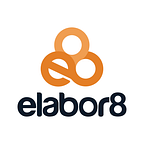SAFe Role Based Training
James Halprin, helping organisations through Lean-Agile Transformation
“An organisation’s ability to learn, and translate that learning into action rapidly, is the ultimate competitive advantage.” — Jack Welch
In the last article of this five part series, we discussed how the SAFe® Implementation Roadmap describes the steps, or ‘critical moves,’ an enterprise can take to implement SAFe in an orderly, reliable, and successful fashion.
Not surprisingly, training is specifically called out in the roadmap as training is one of the keys to a successful transformation. It provides a safe environment for people to learn and explore new ideas as well as better understand how the change will impact them. To help organisations successfully transition to SAFe, SAFe offers eleven certified core and advanced role based training courses. In addition, several new courses are being added this year.
The core courses, which require no prior Agile knowledge and form part of the Implementation Roadmap, include:
- Leading SAFe (SA) — This is the seminal SAFe course and can be thought of as ‘SAFe for Leaders’. This course teaches the principles and practices of SAFe, how to execute and release value through Agile Release Trains, and what it means to lead a Lean-Agile transformation at enterprise scale.
- SAFe Product Owner / Product Manager (POPM) — The roles of Product Owner and Product Manager are critical to the success of the Agile Release Train (ART) as they enable product development flow, drive program execution and drive the continuous delivery of value. This is a very practical course where participants will develop skills in writing Epics, Capabilities, Features, and User Stories within the context of SAFe.
- SAFe Scrum Master (SSM) — Unlike traditional Scrum Master training that focuses solely on Agile fundamentals, the SAFe Scrum Master course builds upon this team level foundation by exploring the role of the Scrum Master in the context of the SAFe enterprise.
- SAFe for Teams (SP) — SAFe for Teams is a high energy two day course that is intended for all members of the Agile Release Train (ART) i.e. up to 125 people, to experience together in a ‘Big Room Training’ session. This course builds the skills needed to become a high-performing team member of an ART and to learn how to collaborate effectively with other teams. Below are some pictures from a SAFe for Teams I facilitated for an ART that had over 80 members.
The advanced SAFe courses include:
- Implementing SAFe (SPC) — As the primary change agents in a Lean-Agile transformation, SAFe Program Consultants (SPC) can coach teams, launch Agile Release Trains (ARTs), enable a Lean portfolio, and can become trainers of SAFe courseware. To be effective in this key role the 4 day SPC course will teach the values, principles and practices of SAFe. It also explores the SAFe Implementation Roadmap in detail.
- SAFe Release Train Engineer (RTE) — The RTE is the chief Scrum Master on the ART and as such are critical to an ARTs success. Through experiential learning, attendees will examine the RTE role in a Lean-Agile transformation. They will learn how to facilitate ART processes and execution, coach leaders, teams, and Scrum Masters in new processes and mindsets. They will also learn how to prepare, plan and execute the 2 day Program Increment (PI) planning event.
- SAFe Advanced Scrum Master (SASM) — The SASM course takes a deeper dive into the role of the Scrum Master within a SAFe enterprise and covers key topics ranging from how to build high performing teams through to improving program performance by effectively facilitating the Inspect and Adapt workshop.
The new courses being introduced in 2018 include:
- SAFe DevOps — One of the most eagerly anticipated courses to be added to the SAFe training lineup is SAFe DevOps. This two-day course covers the hands-on skills needed to accelerate time-to-market by improving the flow of value through the SAFe Continuous Delivery Pipeline with DevOps.
- SAFe Agile Software Engineer — The discipline of Software Engineering has evolved over the past decade with the introduction of Lean-Agile and DevOps principles and practices. During this three-day workshop-focused course, attendees learn the foundational principles and practices that make up the Agile Software Engineering discipline.
- SAFe System and Solution Architect — During this two-day course, attendees will explore the principles underlying Lean-Agile architecture, learn to lead and support ARTs, extend the principles driving continuous flow to large systems-of-systems, and discover how to enable greater value across an entire solution portfolio.
- SAFe for Government Programs — This course is similar to Leading SAFe but specifically focused on government. During this two-day course, attendees will learn the principles and practices of SAFe, how to execute and release value through Agile Release Trains, and what it means to lead a Lean-Agile transformation of a program inside a government agency.
In this series of articles we’ve explored four key elements of SAFe including the Lean-Agile values and principles that underpin SAFe, Essential SAFe, the SAFe Implementation Roadmap and SAFe role based training. I trust you have found this information helpful as you look to scale Lean-Agile in your enterprise.
Good luck on the journey!
Call To Action
Get in touch if you’d like to discuss scaling agile within your organisation.
If you liked this blog, then you can check out my other blogs here:
